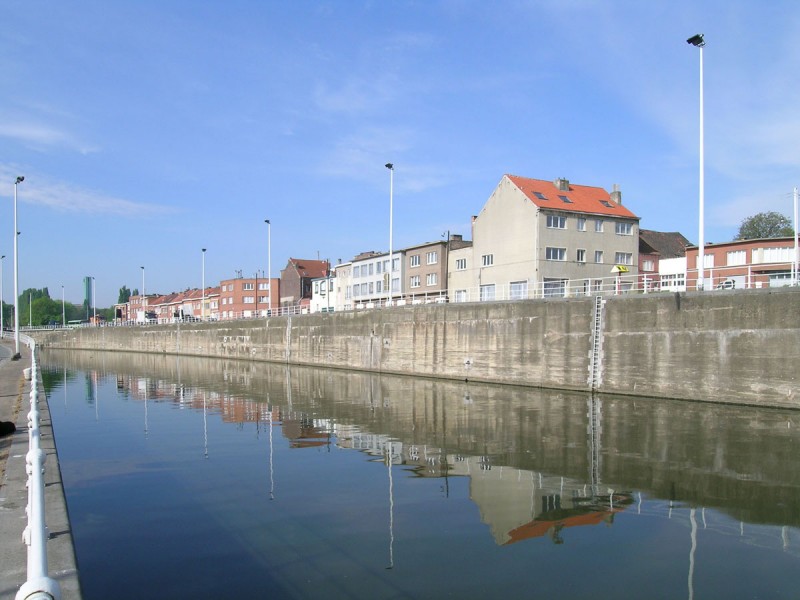Galleries, studios, avant-garde shops, trendy restaurants and electro evenings: all urban culture can be found near the canal. Nicknamed “little Chicago” twenty years ago, today the upper end of rue Dansaert is experiencing a rebirth in artistic creativity. But don’t confuse Saint-Géry with the Canal! The lower, rather touristy part is quite distinct from the upper part, which is purely for connoisseurs.
In the shop Le Bonheur, Thierry Berleur explains his concept “of audiovisual grocery”: “I’m an old0style shopkeeper. I choose my products conscientiously, I sell them and I know my customers.” This very designer shop is aimed at people who like new-wave artists, DVDs, books and rare objects from all over the world; you’ll find everything surprising. A short walk from there is Alice-gallery, a multi-faceted gallery and trendy boutique, where urban culture reigns supreme. There you learn that art is all around us. From metro seats turned into canvases to customized Nike trainers, art intrudes into our everyday life for our enjoyment.
In this former industrial area, you can still see the remains of factories that have moved out. Now a place of innovation and creativity, many industrial plots have been transformed into galleries, cinemas, theatres and loft apartments.
“The Heart Of Belgian Creatvity”
Crown Gallery is one of the many galleries in the area. Located on rue du Houblon, it shows contemporary art of the 21st century. The manager, Jacques Van Daele, exhibits paintings, photographs and sculptures form all over Europe. Jacques is rather fond of the canal. To him it’s “the heart of Belgian creativity.” And the streets lining the canal are certainly creative. First popular with fashion designers, rue A. Dansaert and the surrounding area were soon transformed into a thriving breeding ground. Flemish people wishing to live in the city have brought the centre of Brussels to life again.
Factories have made way for “studio boutiques.” These shops are characteristic of Brussels and are what it does best when it comes to fashion. Between the milliner Christophe Coppens, the fashion designer Martic Margiela and the jeweler Marie-France Vankueken, the canal gathers together the cream of Belgian designers. One of them, Nicolas Woit, fashion designer, is keen to design in “small quantities so as not to lose sight of quality.” In his boutique on rue A. Dansaert, selling and design blend together. Sketches, piles of photographs and fabric samples spice up the interior. Thirties-style evening gowns hang alongside light silk blouses for spring. Going in there means having the change to receive advice from the genius himself.
An Area Being Transformed
To end your stroll, it’s good to immerse yourself in the working-class history of the area again, through the street names that tell the story of the city. Impasse de la Cigogne, rue de la Clé, du Houblon, Remparts des Moines,… Just some of the many evocative names that recount the industrial and rural past of the district.
Along these alleyways is the very chic restaurant La Manufacture. The cuisine there is modern and stylish, the setting intimate, around a light-filled patio furnished with exotic wood. For a slightly simpler ambience, Henri, rue de Flandre, is a good trendy place to go. The managers run a friendly and sociable establishment there.
In ten years’ time, the canal area will be a “Bobo” district like the others. It’s constantly changing today. The people there are approachable and genuine. When you go down there you see culture in motion: amazing!







